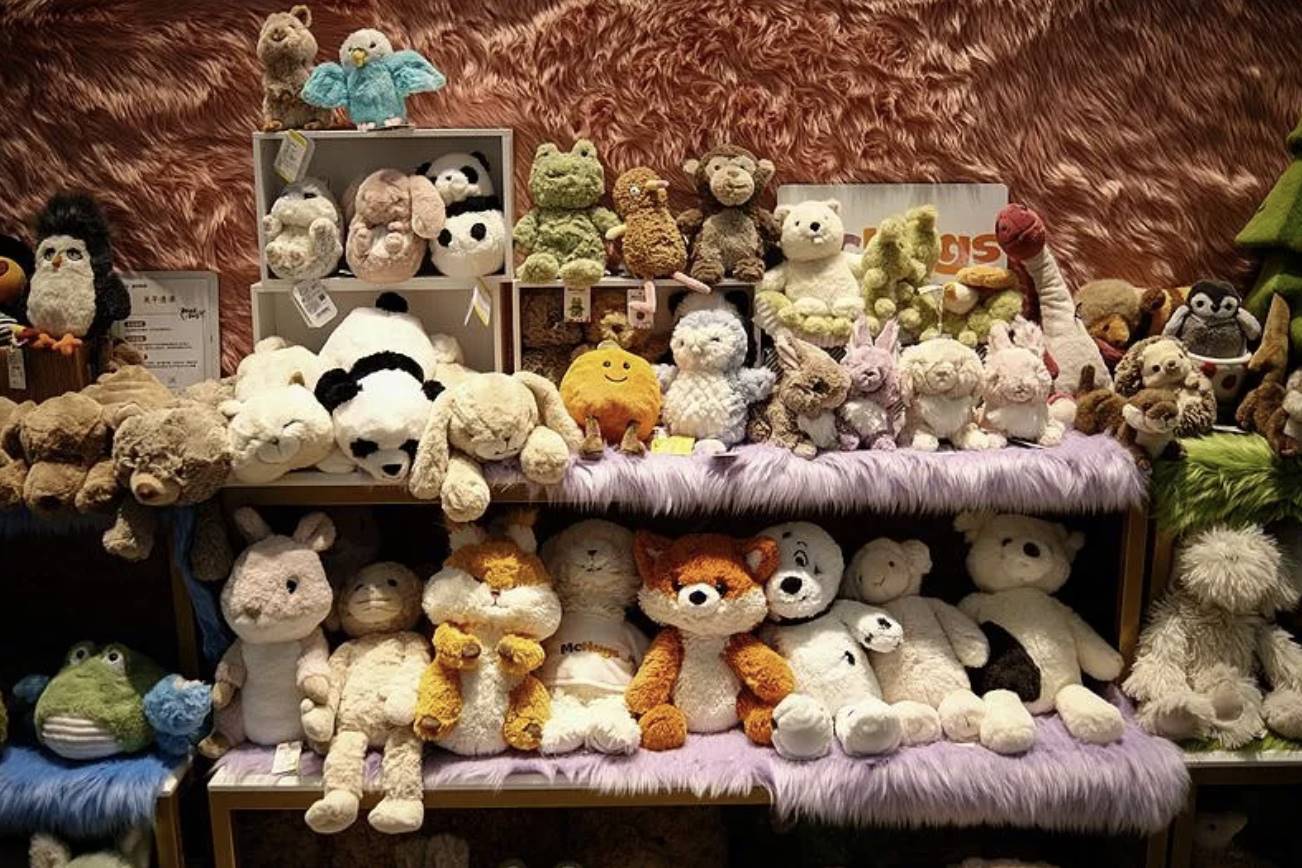Toy Track, Perhaps Not the "Shortcut" for AI Entrepreneurs to Achieve Product Launch
Author: Su Zihua

The first phase of the AI toy entrepreneurial boom has yielded its answers.
Over the past year, an increasing number of young people have viewed "AI toys" as a viable entrepreneurial path.
At an AI-themed salon in Zhongguancun, a recently departed operations employee from an internet company expressed:
"I don't want to work anymore; I want to create an AI toy to sell overseas. Riding the wave, it should have great prospects."
On social media platforms like Douyin, Xiaohongshu, and WeChat Video, if you randomly click on a post about "AI toys," you can almost always find young people sharing similar thoughts in the comments.
Similarly, at various domestic and international tech exhibitions, whether showcasing technical solutions or complete products, booths related to "AI toys" almost always attract the highest foot traffic, surrounded by crowds.
Creating an emotional and intelligent AI companion robot, reminiscent of those in sci-fi movies, seems to have become an easily attainable business.

People hope AI toys will provide emotional companionship value | Image source: The Guardian
However, the bustling surface cannot hide the awkward reality.
Over the past year, entrepreneurs from major companies like Meituan, Baidu, Alibaba, ByteDance, Microsoft, and Anker Innovation, backed by first-tier funds, have flocked to create "emotional and soulful" AI toys. Yet, a year later, few teams have actually launched products that can be sold on the market.
A head of a voice technology company that has interacted with several entrepreneurs from internet backgrounds lamented the pressure they face: "The development speed of voice models has not met expectations, leading to actual product performance falling short, which has affected the product launch process. Many companies have received funding from investors, and if their products are not launched in a year, it may be difficult to explain to the investors."
Even for those who have launched products, the feedback is not optimistic. Currently, most AI plush toys released by toy companies and internet entrepreneurs are priced around four to five hundred yuan, primarily featuring functions like chatting and storytelling.
From buyer feedback, issues such as complex interactions, heavy AI flavor in voice chatting, frequent disconnections, and slow responses are prominent, making it hard for users to have the patience to listen to them speak.
Multiple AI toy technology solution providers speculated to Geek Park that the return rate for AI plush toys priced at four to five hundred yuan might exceed 30%.
On the other hand, the large influx of AI toy technology solution providers is also blocking the path for ambitious "AI entrepreneurs." A technology solution provider from Huaqiangbei told Geek Park, "After the Spring Festival, I suddenly had dozens of toy manufacturer clients. One Bluetooth toy product saw its sales peak again after adding AI dialogue functionality."
The "emotional interaction and soulful" products that internet elites once claimed they would create have already been realized by the "Huaqiangbei" crowd, rapidly pushing them to market at prices over 100 yuan, significantly compressing profit margins.
Huaqiangbei offers grassroots individuals the hope of quick wealth while ruthlessly extinguishing the entrepreneurial dreams of internet professionals.
The First Batch of AI Toys Essentially Sells "Voice Boxes"
In fact, if we break down the first batch of relatively well-known AI toys on the market, their essence is basically: plush toy + voice box.
For example, the AI "Pleasant Goat" launched by the listed company Aofei Entertainment, the "AI Magic Star" from Shifeng Culture, and BubblePal founded by a former Tmall Genie partner, all feature a necklace-like pendant hung around the plush toy's neck, which itself contains a Wi-Fi module that can connect to the internet, enabling users to chat with the AI large model.

Currently available representative AI toys on the market | Image source: Internet
FoloToy's Magicbox smart dialogue box is essentially a circuit board kit equipped with an AI large model, compact enough to be embedded in any toy, allowing users to set its role.
The functions they promote, such as chatting, storytelling, and playing music, are no different from a Bluetooth speaker connected to a large model.
This is what we can currently see and purchase as the first batch of AI toys on the market.
A technology solution provider observed that many original toy manufacturers from Chenghai have come to discuss cooperation, "They may have sensed this is a new direction; they just want to invest a little money to try it out, rather than establishing a research and development team."
He summarized that mid-to-low-end toy manufacturers view AI more as a marketing gimmick, not expecting it to bring high premiums or high margins, but hoping to sell more and clear out some inventory while the AI trend is hot. Therefore, product prices are generally around 100 yuan, which is low enough that even if users find the voice chat function unsatisfactory, it usually falls within an acceptable range, and they may not necessarily return it.
"In fact, no one is sure how much value can be generated by adding a chat function to toys," he said. "From the perspective of the actual toy industry, a pure plush toy generally costs around 100 yuan, and if an AI box is added, users may not be willing to pay a higher premium for it. If the premium is too high, the return rate is likely to increase."
Currently, users purchasing AI toys are willing to pay a higher premium largely for the voice chat function. Therefore, the quality of the voice chat experience almost determines the success or failure of a product.
However, the quality of the voice chat experience is often not in the hands of the AI toy entrepreneurs themselves.
From a technical perspective, the currently available AI toys primarily utilize third-party voice recognition or synthesis solutions from companies like Doubao, Baidu, and Agora, connecting to large models.
The large model determines the intelligence of the chat assistant, while the voice recognition and synthesis processes determine the effectiveness of voice chatting, such as response speed, human-like interaction, intelligent interruption, and emotional understanding capabilities.
Any of these factors that affect the quality of dialogue and chatting are beyond the control of AI toy manufacturers.
Additionally, the founder of the AI hardware brand Rabbit mentioned a key term during a recap of the past year's AI entrepreneurship on Geek Park's podcast "Start Connecting": loss of control. He stated that the biggest difference in entrepreneurship in the AI era compared to the past is that developers have lost control over the final results.
"AI models are black boxes, and their performance is uncertain. Developers do multi-agent systems, handing over reasoning, planning, and execution to AI; all they can do is observe the results and optimize in reverse. The world has changed."
It can be said that "AI toy entrepreneurs" who rely solely on large models as their product selling point do not grasp the core selling points of AI toys. They also cannot control their own research and development progress.
The Toy Track is Not an "Easy Path" for AI Entrepreneurs
Everything seems to have not progressed as internet professionals had anticipated.
Over the past year, both the internet industry and first-tier investment institutions have viewed toys as the fastest route for AI implementation. Cloud providers like Volcano Engine, Alibaba Cloud, and Baidu Cloud have held closed-door events themed around "AI hardware" and "AI toys" in various locations, continuously promoting "AI toys," with their promotional rhetoric largely echoing:
"AI toys have a solid application promotion foundation and are expected to become one of the fastest-growing AI terminals."
"AI technology is reshaping the toy industry at an explosive pace."
"AI toys are surging in a 60 billion yuan market."
"In the short term, AI toys are an ideal landing scenario for AI."
"AI hardware is expected to become a traffic entry point in the AI era."
Looking back now, the many assumptions entrepreneurs had about the business model of AI toys have been shattered.
The idea that AI toys could continuously charge users for model usage fees and subscription fees to realize the implementation of large models has been overturned. Especially after the open-sourcing of DeepSeek, the prices and access thresholds for top large models have been continuously decreasing, with companies like Tuya Smart and Xiao Zhi AI directly offering free access to AI assistants. While large models remain attractive, the business model that relies on large model capabilities as a selling point has been shattered.
As the access threshold for large models rapidly decreases, the technical threshold for hardware is also declining swiftly.
The open-sourcing and high performance of DeepSeek have spurred a surge of AI toy technology integration solution providers emerging around the Spring Festival of 2025, launching complete AI toy technology solutions that provide full chips, large model access, and real-time audio and video capabilities. They have rapidly lowered the technical entrepreneurial threshold for AI toys.
Industry insiders reveal that a low-spec voice box can be obtained for just a few dozen yuan. Moreover, this cost continues to decrease, "Previously, the industry mainly focused on high-end solutions, but in recent months, competition has intensified, and everyone is now cutting costs."
The AI toy technology solution provider "Light Voice AI" focuses on Wi-Fi module business, essentially packaging chips into modules, integrating antennas, anti-interference circuits, and other components, shortening the development cycle (traditional hardware takes six months, while module solutions can be reduced to one month). Its relevant personnel have observed that chip manufacturers are lowering technical thresholds by opening up underlying capabilities, pushing the industry towards a bubble. He predicts, "This year, there may be several hundred new competitors."
The development threshold for AI hardware is becoming increasingly low, now reduced to a "primary school student" level of difficulty. The reduction in development difficulty has led to the emergence of various forms of AI hardware.
For instance, the free open-source AI hardware project "Xiao Zhi AI" allows numerous users to purchase microphones, speakers, circuit boards, and other components to create various small toys capable of voice chatting through DIY methods, or to control smart home devices with AI chat, showcasing immense creativity. Geek Park has learned that in the past two months, the number of devices connected to Xiao Zhi AI has increased by 100,000, growing at a doubling rate each month.
A new consensus is emerging: AI toy entrepreneurial teams that rely solely on hardware integration capabilities and treat large model capabilities as selling points will lose their advantages. Toys must first be fun; "technological content" is secondary. AI toys are not a competition arena for showcasing AI technology capabilities.
The AI toy market is still in the early stages of product definition. Leveraging the communication capabilities provided by large models to explore a new track of "emotional technology" may have a more promising future.

AI plush toy Ropet | Image source: Kickstarter
For example, the recently launched AI plush toy Fuzozo focuses on its self-developed multimodal emotional model (MEM), enhancing its capabilities in companionship, play, and emotional interaction by delegating more technical improvements of large models and voice capabilities to partners. This could be a path more aligned with the essence of toys. Similarly, the AI plush toy Ropet, which raised $200,000 on Kickstarter, follows the same approach.
A smart hardware company owner with over 20 years of experience has recently ventured into the AI toy business, stating, "My team members are very eager to do this; they are very passionate." However, he admits he is not optimistic about AI toys.
"In the short term, some may sell, but the long-term challenges are too great."
He believes that the core of this business lies in whether it can continuously build cultural content around IP, upgrade gameplay, and form its own brand moat. "This is very challenging; Chinese companies excel at speed and low cost. Brand building and channel development are currently relatively weak."
However, he quickly added, "But the enthusiasm of the young team members still needs to be supported."
Looking forward to the debut of the second batch of AI toys.
免责声明:本文章仅代表作者个人观点,不代表本平台的立场和观点。本文章仅供信息分享,不构成对任何人的任何投资建议。用户与作者之间的任何争议,与本平台无关。如网页中刊载的文章或图片涉及侵权,请提供相关的权利证明和身份证明发送邮件到support@aicoin.com,本平台相关工作人员将会进行核查。




